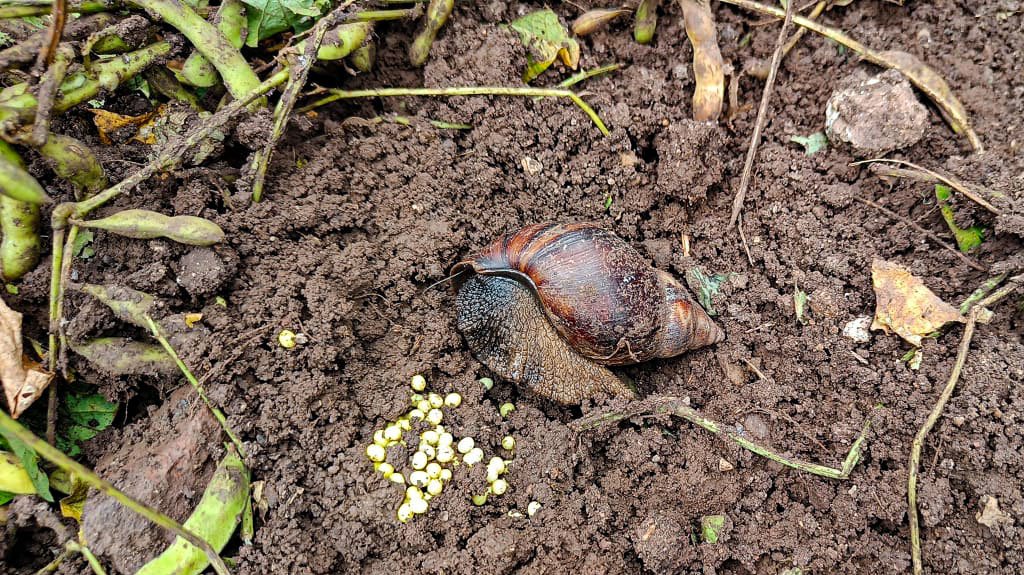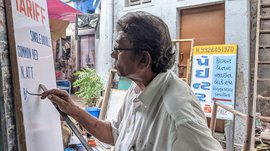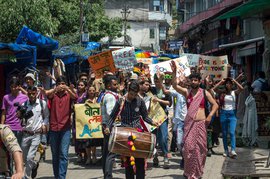Farmer Sunanda Soope dreads the month of June and the monsoon months that follow. It’s the time of year when mothe gogalgay , the local name for Giant African Snails, destroy her one-acre farm in Darakwadi village.
“Whatever we sow, they eat - paddy, soybean, peanuts, kaala ghevda [black beans], kidney beans,” she says. Even fruits like mango, chikoo [sapota], papaya and guava are not safe from them. “We can see snails in multiples of thousands,” says the 42-year-old farmer.
A member of the Mahadev Koli community, listed as a Scheduled Tribe in Maharashtra, she lives next to the Chaskaman dam with her mother and brother. Her home and farm are on either side of the dam, and she must row a boat back and forth, half an hour each way.
The Giant African Snails ( Achatina fulica ), are an invasive species in India, says the Global Invasive Species Database , and known to feed on a variety of crops. During the monsoons, the snails take over fields at the base of the Tiwai hill from June to September. Sometimes they may stay on for a few more months. Sunanda, speaking to this reporter at the end of 2022, says she has been facing this problem for three years now.
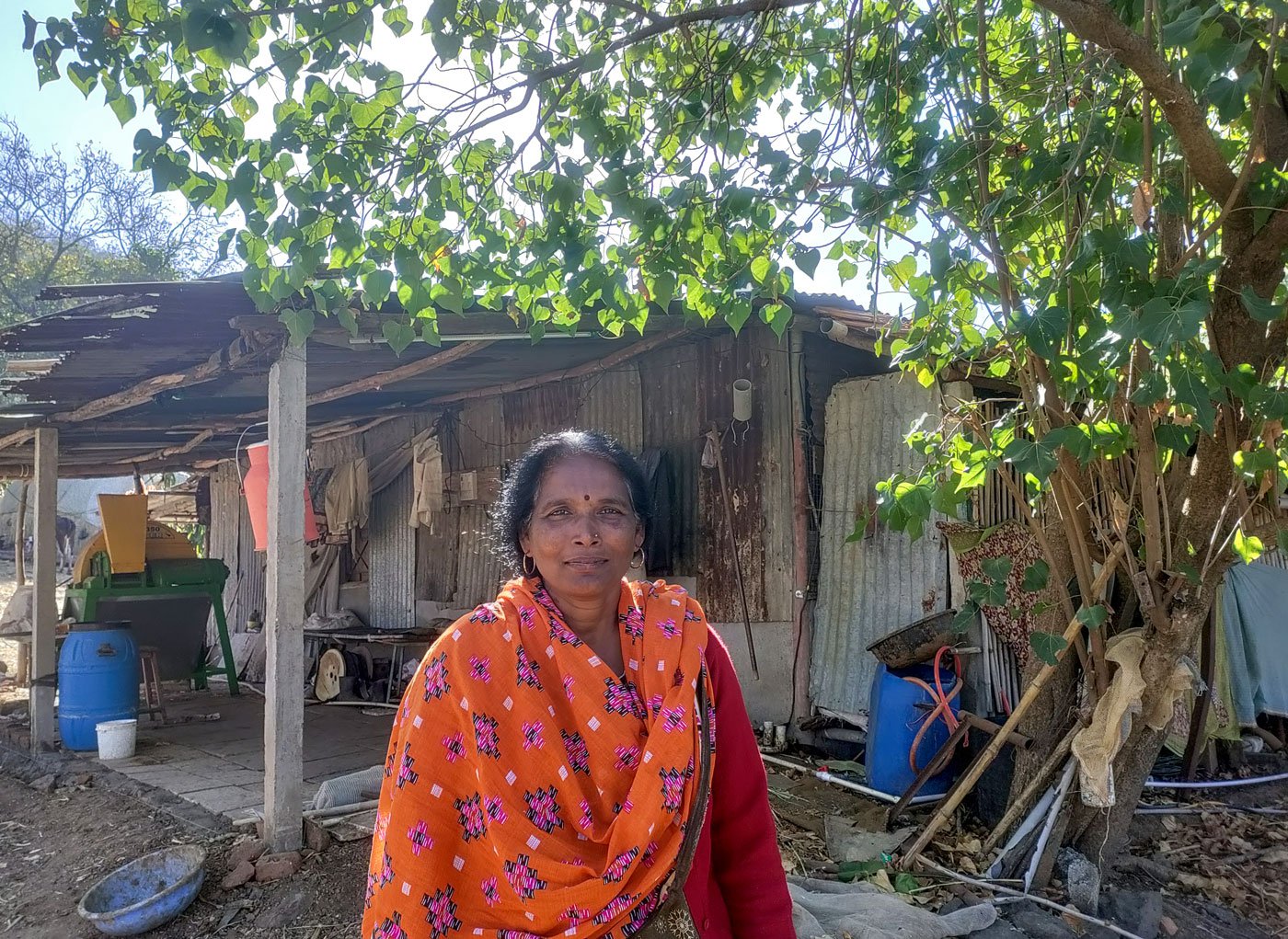
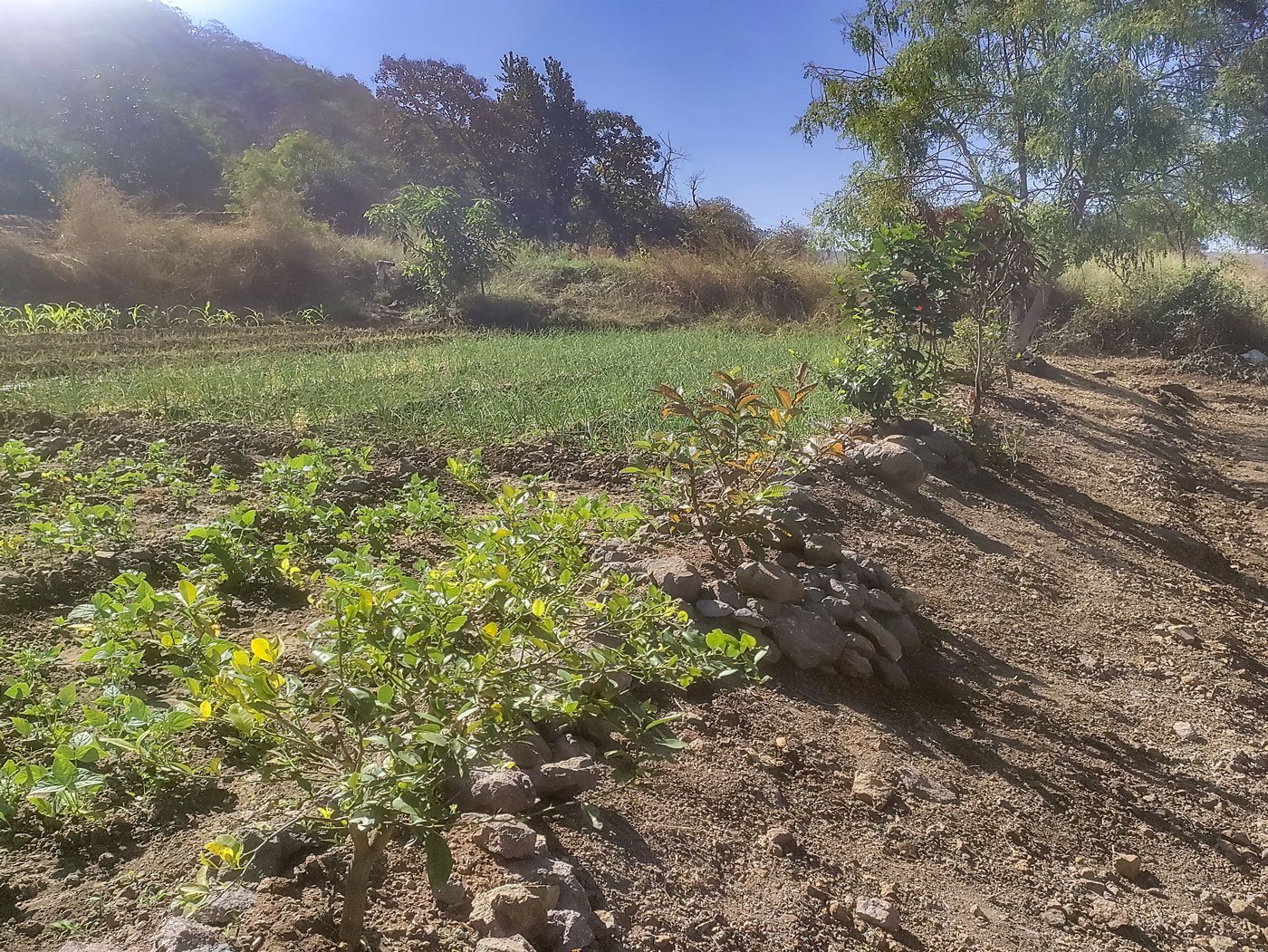
Sunanda Soope (left), a farmer in Darakwadi village of Pune district says that her farm (right) has been affected by Giant African Snails
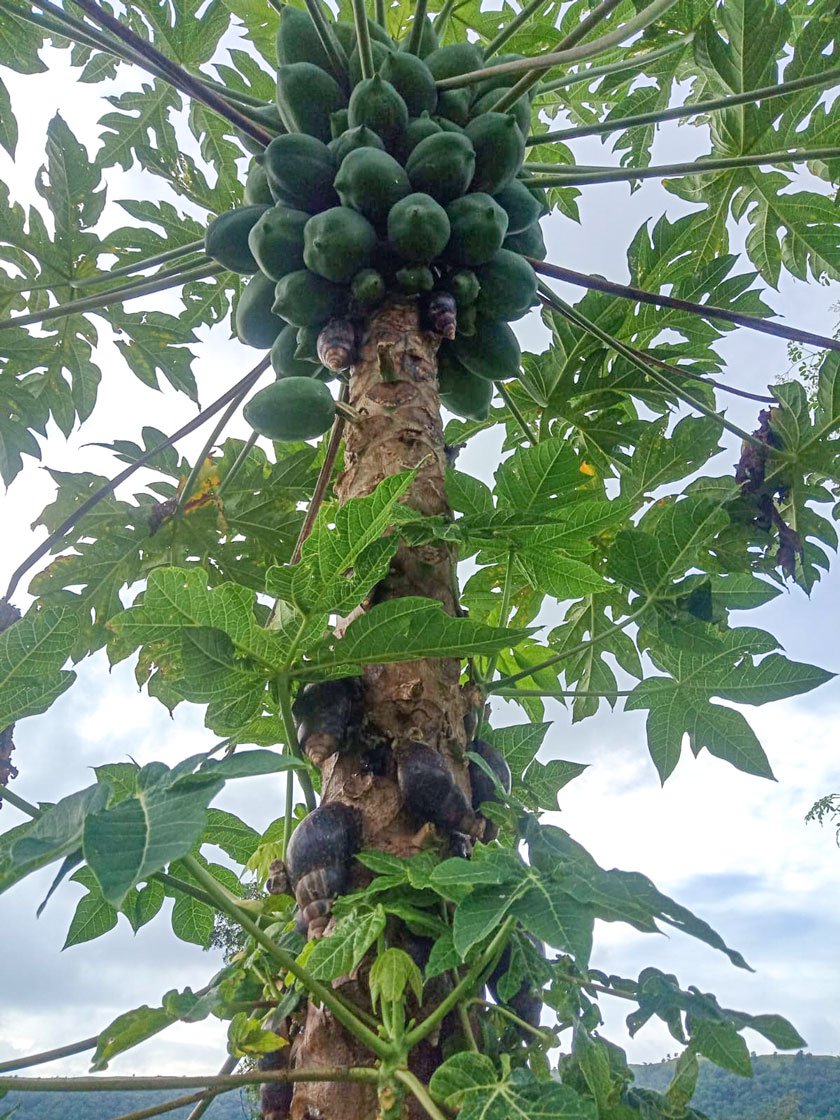
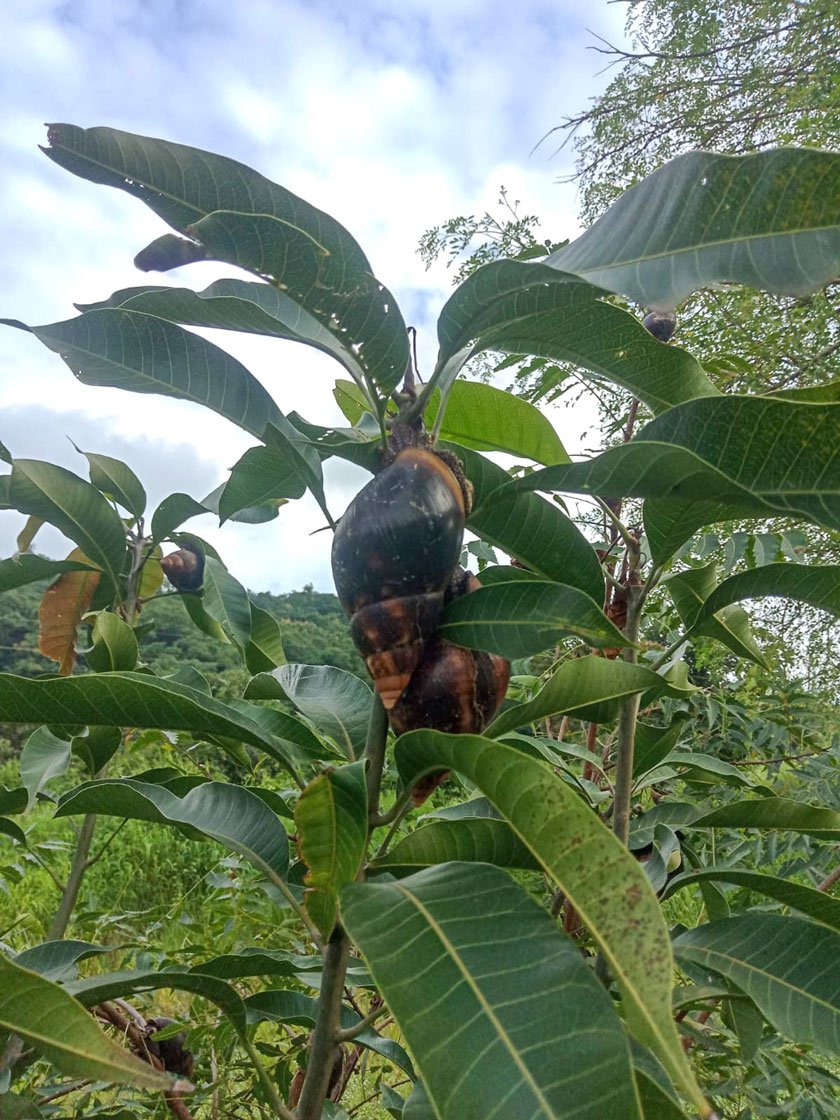
Giant African Snails on the trunk of papaya tree (left) and on young mango plant (right) in Sunanda's farm. She says, 'The snails destroyed everything'
“I can’t say how they first arrived,” says Dr. Rahul Ghadge, the nodal officer of Krishi Vigyaan Kendra, Narayangaon. “A snail can cover a kilometre in a day and they multiple through hatching,” he adds. He has observed that they go into dormancy in January and come out of their shells when it becomes warmer, “their survival temperature gets activated,” he adds.
“I had [sowed] black beans and
rajma
[kidney beans] on the farm. The snails destroyed everything,” says Sunanda. “I was expecting to harvest 50 kilograms but got only one.”
Rajma
sells for Rs. 100 a kilo. Sunanda’s crop of black kidney beans were not spared either and neither were the ground nuts she planted. She estimates her losses at around Rs. 10,000 just for the peanuts.
“We have two seasons of sowing at the farm. In the monsoon [
kharif
] and after Diwali [
rabi
],” she says. Last year, the infestation of snails forced her to leave the field fallow for two months after the monsoon. “Finally in December we were able to sow
harbara
[green chickpeas], wheat, peanuts and onion,” she adds.
Dr. Ghadge, five to 10 per cent of farmland in Maharashtra has been affected by the snails, he estimates. “They [the snails] have a special liking for soft stems of plants in their initial stages of growth and this maximizes the damage. Farmers are really suffering a loss due to this.”
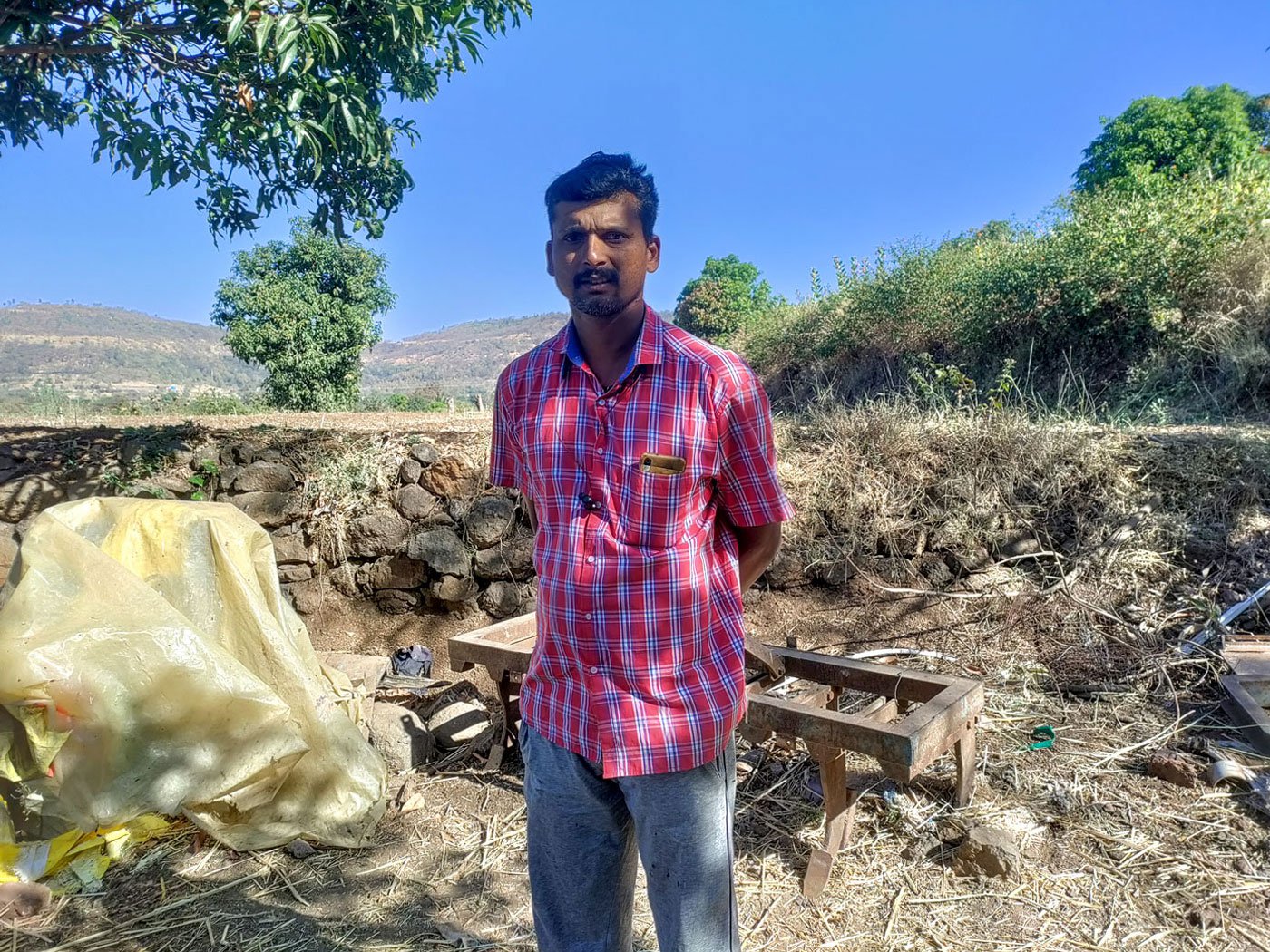
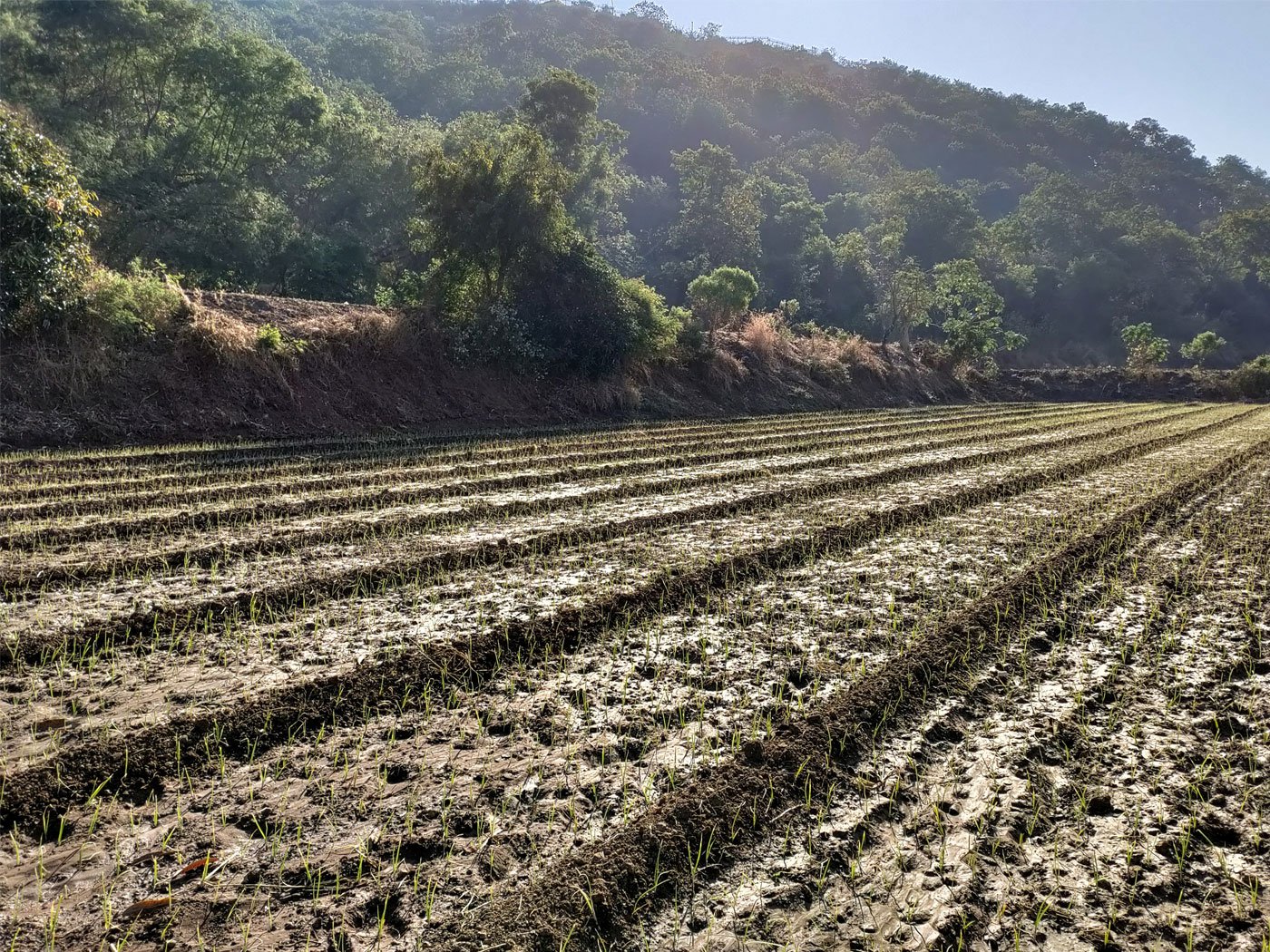
Nitin Lagad on his 5.5 acre farm in Darakwadi village, also affected by the Giant African Snails. He had to leave his farm empty for four months because of the snails.
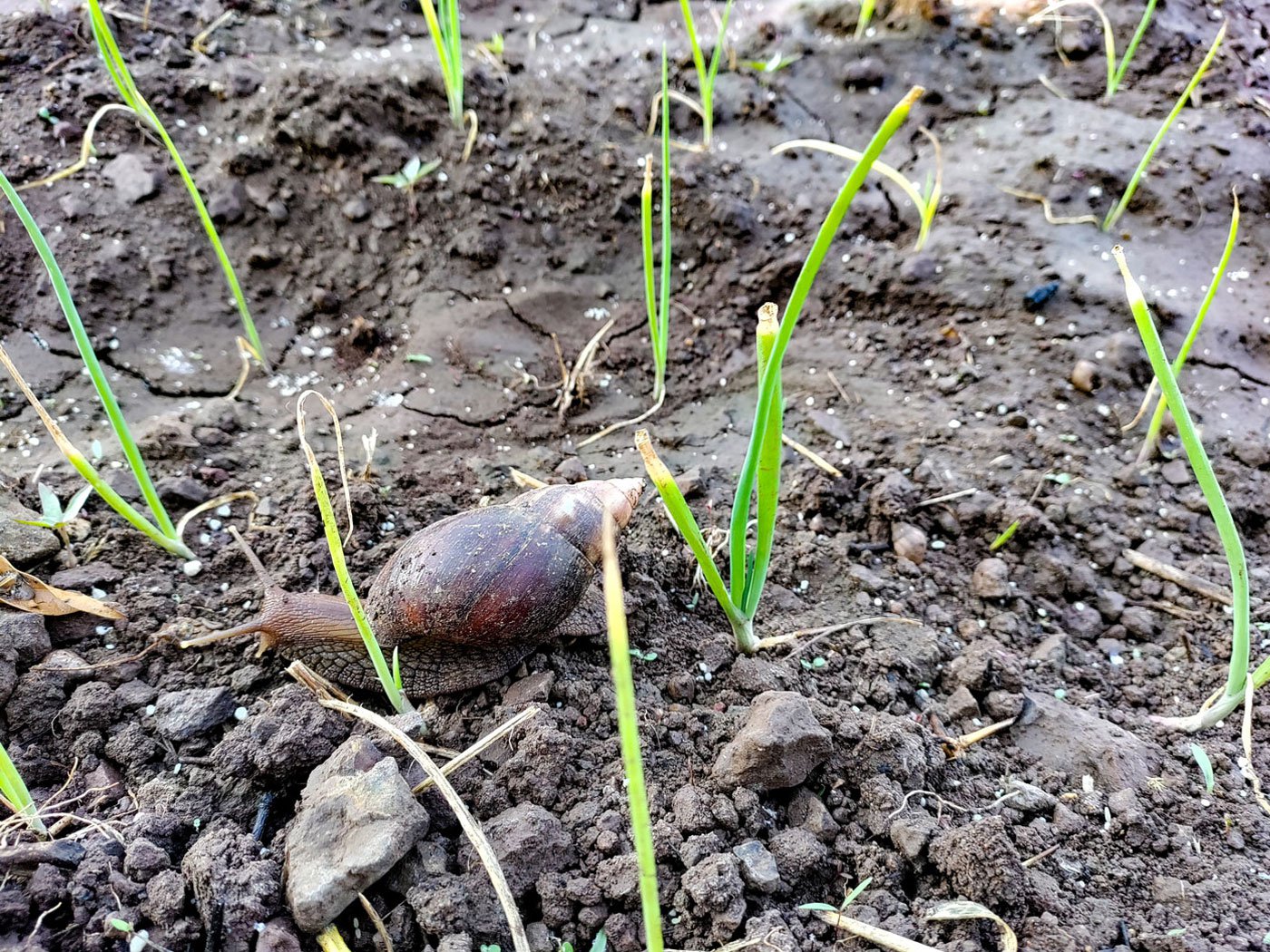
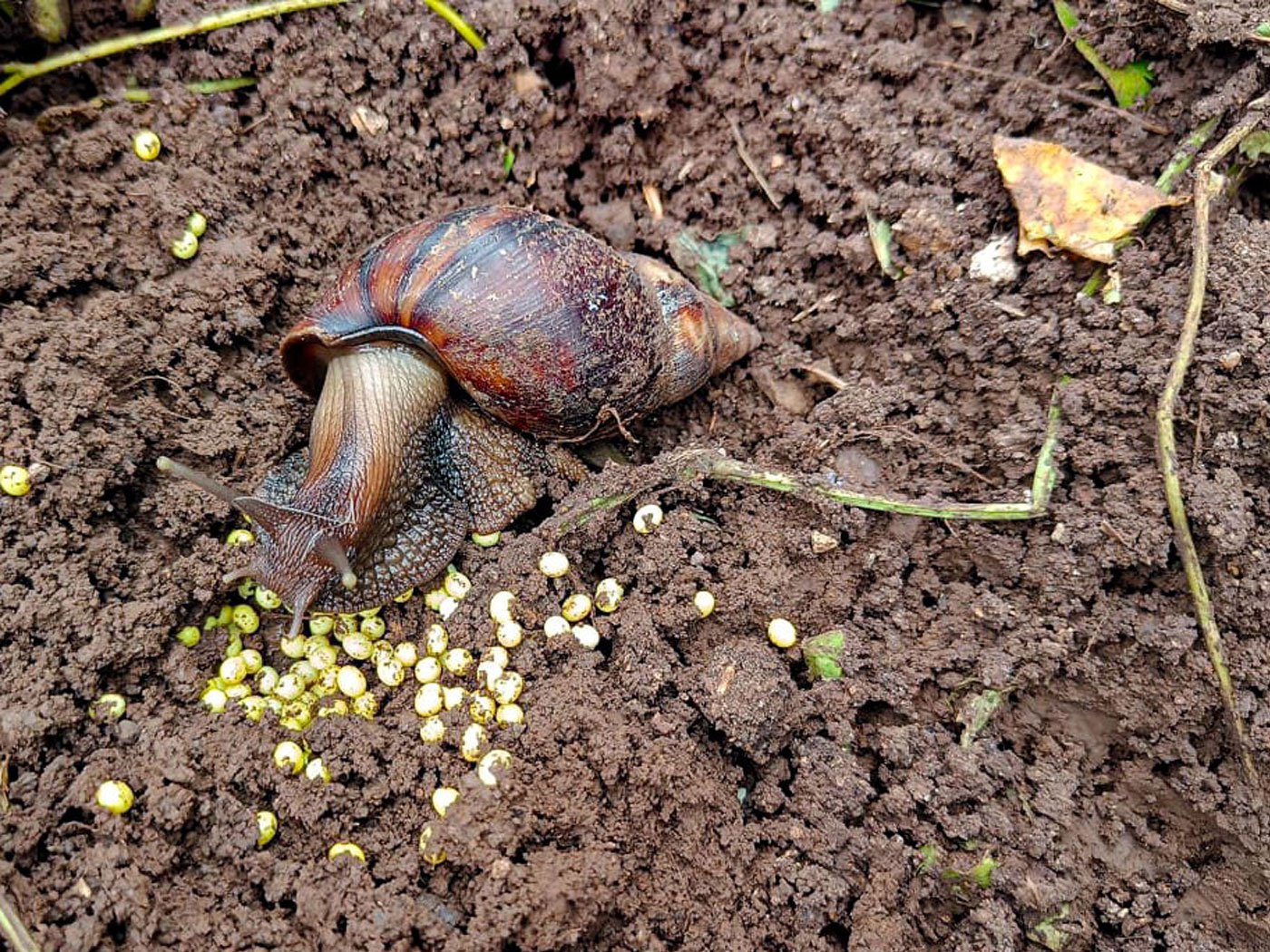
Left: Nitin has now sown onion but the snails continue to affect the crop. Right: Eggs laid by the snails
Nitin Lagad, a 35-year-old farmer also from Darakwadi, faces a situation similar every year and blames the snails: “This year 70 to 80 bags [roughly 6,000 kilos] soya beans were expected but we could harvest only about 40 bags [2,000 kilos].”
He generally plants three rounds of crops on his 5.5 acres. This year he could not sow anything in the second round because of the destruction caused by the snails. “For four months we left the farm just like that. Now we have sown onions knowing that it is also a gamble,” he says.
Agro chemicals like molluscicides have not been effective. “We put medicine on the soil, but the snails are below the soil, so the medicine is a waste. If you catch hold of them and put the medicine, it goes inside its shell,” Nitin explains. “The medicine has not helped at all.”
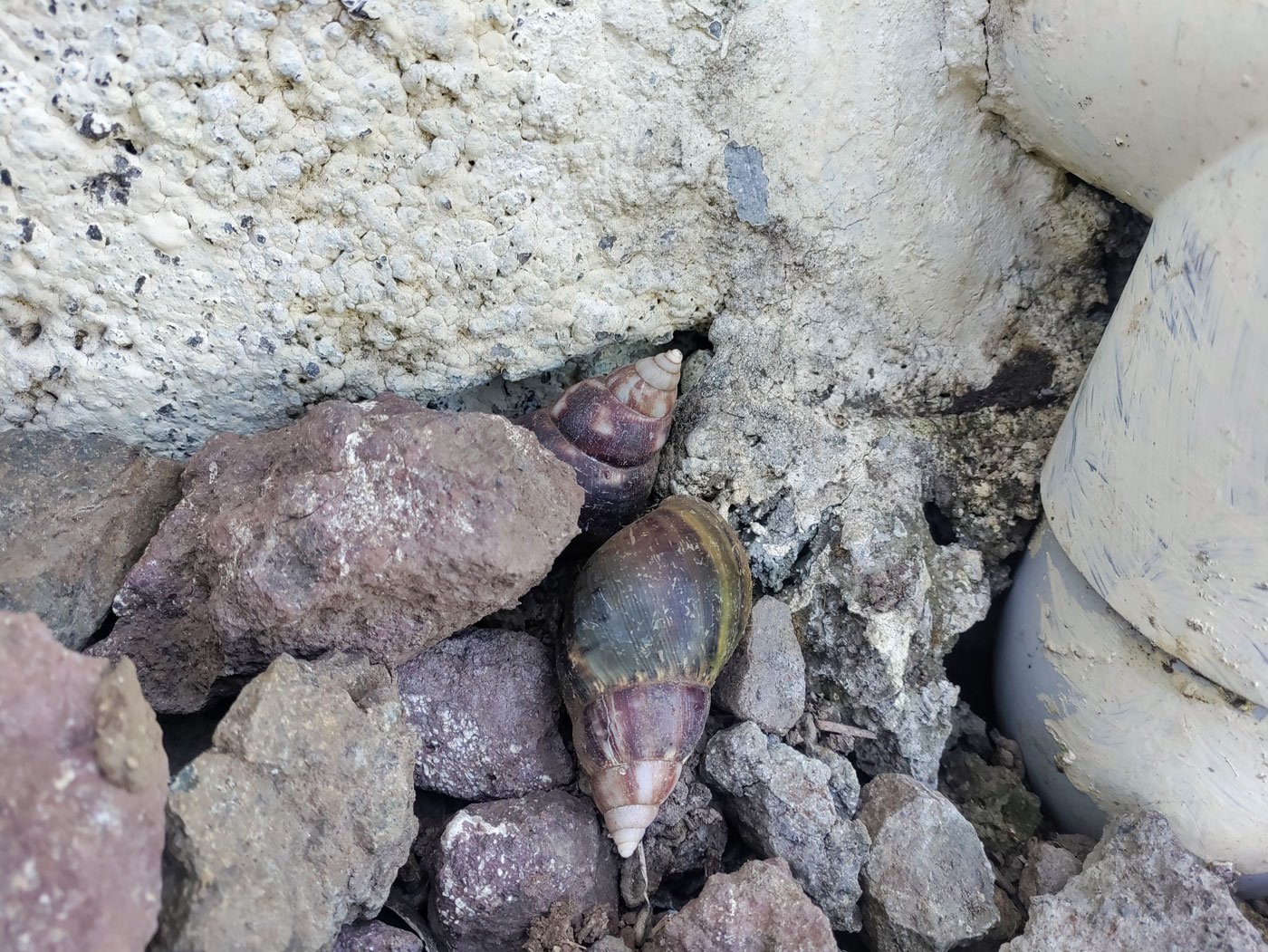
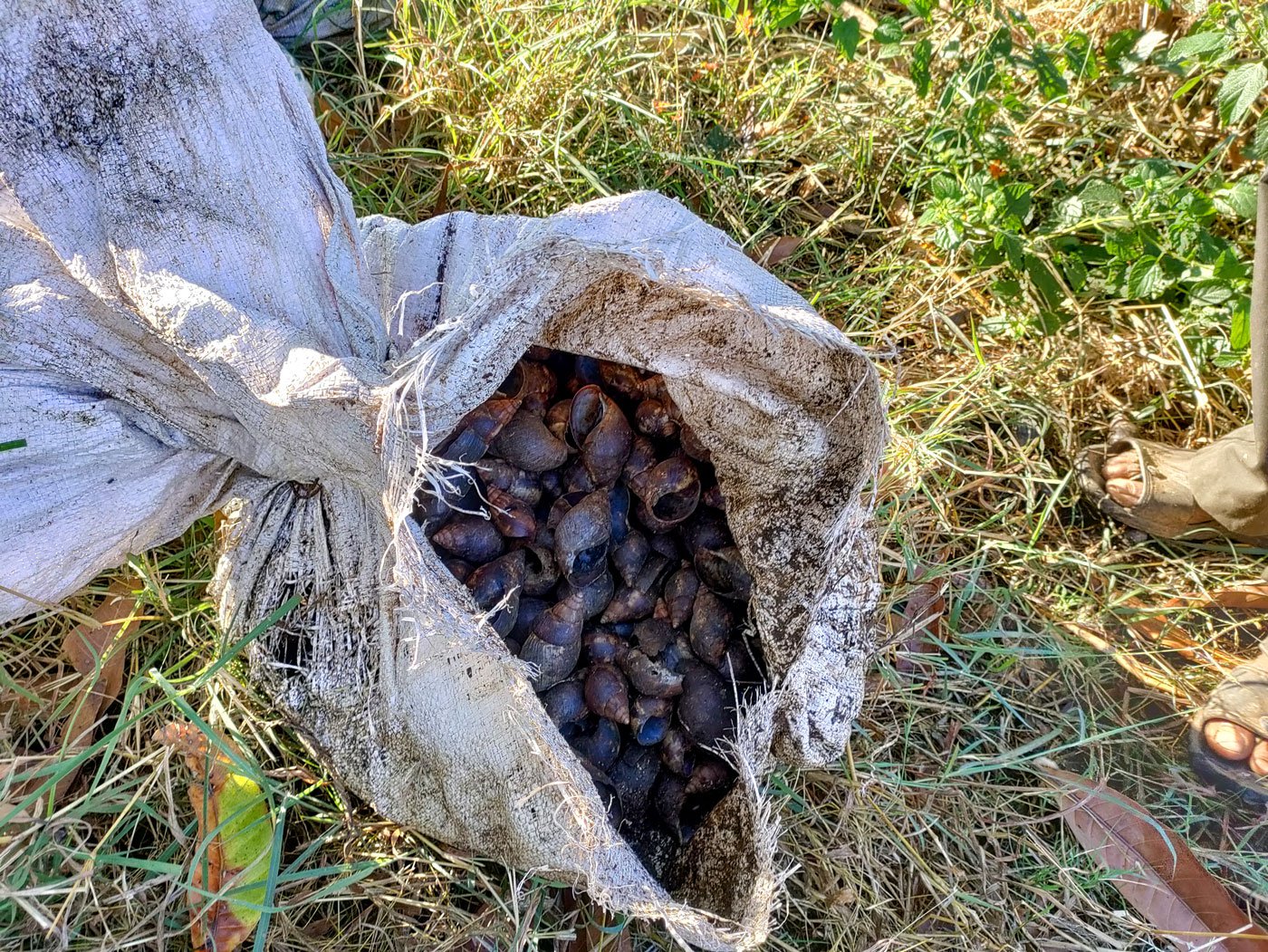
Left: Giant African Snails near Sunanda Soope’s farm. Right: Shells of dead Giant African Snails which were collected after they were killed in a drum of salt water
Left with no other alternatives, farmers in Darakwadi say they collect the snails by hand. Wearing plastic bags as gloves, they lift and put them in a drum filled with salt water which is known to first stun and then kill them.
“They kept coming outside [the drum]. We had to keep pushing all of them inside again and again. We had to push them inside five times. That is when they [finally] died,” says Sunanda.
Nitin, along with a few friends, collected about 400 - 500 at a time on his 5.5 acre farm. Before sowing onions, he cleaned and rid the soil of snails as best he could, but they are still visible. Nitin claims that the snails have destroyed approximately 50 per cent of his farm.
“We catch hundreds in a day and clear major parts of the field and the next day we see the same number of snails again.”' says Sunanda.
“In June, the snails will start coming [again],” she adds, fearfully.
